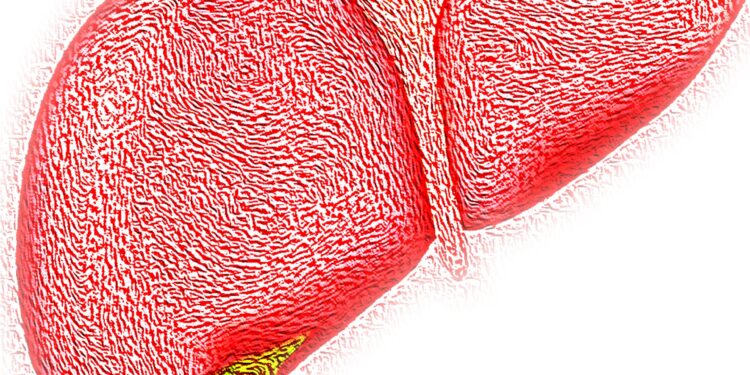Credit: Public Pixabay / CC0 domain
A new study reveals how a critical imbalance in bile acids – the substances made by the liver that help digest fat – can trigger liver disease, including hepatocellular carcinoma (HCC), the most common form of liver cancer. By identifying a key molecular switch that regulates bile, the study throws new light on the potential treatment of liver cancer.
The results were published this month in Nature communications.
A unique function of the liver is to produce bile, which in turn acts as a natural detergent, decomposing the fats into smaller droplets which are more easily absorbed by cells in the mucosa of the small intestine. Beyond acting as a detergent, bile acids – a major component of bile – also play a hormonal function that governs a certain number of metabolic processes.
The corresponding author of the study, Yingzi Yang, professor of biology of development at the Harvard School of Dental Medicine, examined the delicate control of the way in which the bile acids are produced and how the disturbance of the tight regulation leads to liver damage, to inflammation and possibly in HCC.
Yang and his HSDM team spent years studying cell signaling. One of the ways on which they concentrate is the Hippo / Yap way – a crucial signaling route to regulate cell growth linked to cancer.
“In this study, we discovered that the YAP promotes the formation of tumors with a surprising role in the regulation of the metabolism of bile acids. Instead of encouraging cellular growth as expected, YAP acts as a repressor, interfering with the function of a vital bile acid sensor called FXR,” she said.
Schematic summary of the study. Credit: Nature communications (2025). DOI: 10.1038 / S41467-025-58809-Z
The activation of YAP paralyzes FXR (Farneoid receptor X), an essential nuclear receiver to the homeostasis of bile acid. This causes an overproduction of bile acids that accumulate in the liver, leading to fibrosis and inflammation, ultimately leading to liver cancer.
The blocking of the repressive activity of YAP, either by improving the FXR function, or by promoting the excretion of bile acid – could stop this harmful cycle, according to the researchers. In experimental models, the activation of the FXR, the inhibition of HDAC1 which allows the function of the YAP repressor or the increase in the expression of a biliary acid export protein (BSEP), everything has contributed to reducing liver damage and the progression of cancer.
“With this observation, this could lead us to pharmacological solutions that stimulate the FXR, which is very exciting,” said Yang.
According to Yang, the results have additional implications, because more is discovered on how YAP influences metabolic control by regulating nutrient detection. Yang’s interest in studying this function came from his longtime work in cellular signaling in liver biology and cancer. She is also a member of the Dana-Farber / Harvard Cancer Center.
The Yang laboratory uses molecular, cellular, genetic and genomic approaches to study the critical roles of cell signaling in embryonic morphogenesis and adult physiology. Their research is focused on the skeleton and the liver of mammals to explore human biology and approach the underlying pathsiopathological mechanisms of diseases, including cancer.
More information:
Yuchen Liu et al, disturbing the metabolism of bile acids by removing the FXR causes hepatocellular carcinoma induced by the activation of Yap, Nature communications (2025). DOI: 10.1038 / S41467-025-58809-Z
Supplied by Harvard Gazette
This story is published with the kind authorization of the Harvard Gazette, Official Journal of Harvard University. For more new academics, visit Harvard.edu.
Quote: Biliary imbalance linked to liver cancer: the key molecular switch throws new light on treatment interventions (2025, April 28) recovered on April 28, 2025 from
This document is subject to copyright. In addition to any fair program for private or research purposes, no part can be reproduced without written authorization. The content is provided only for information purposes.



